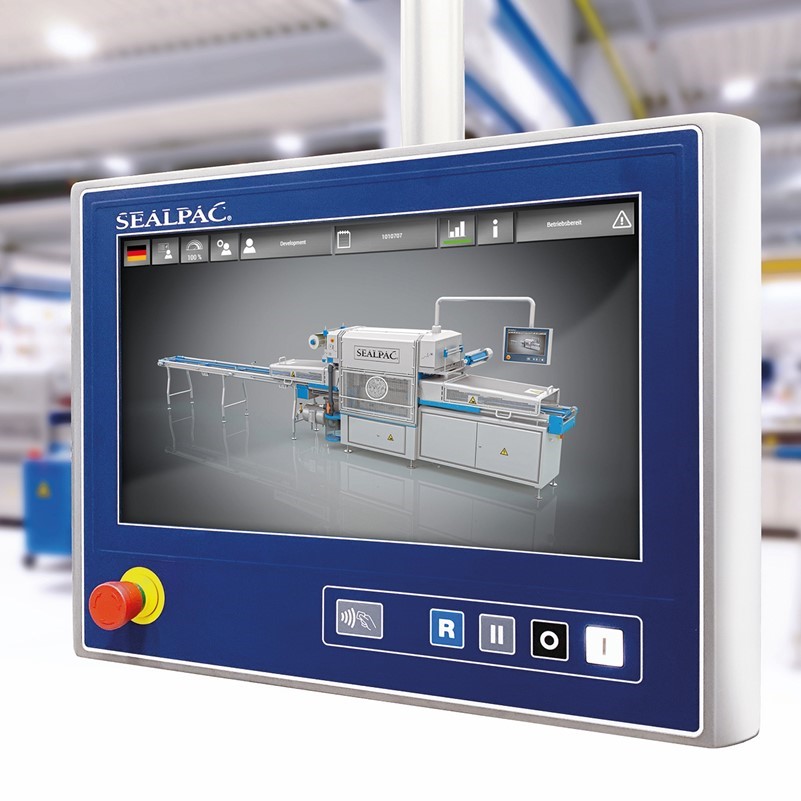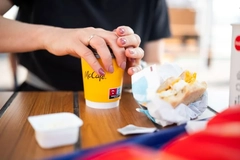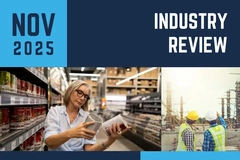
- Industry news
Industry news
- Category news
- Reports
- Key trends
- Multimedia
Multimedia
- Journal
- Events
- Suppliers
Suppliers
- Home
- Industry news
Industry news
- Category news
- Reports
- Key trends
- Multimedia
Multimedia
- Events
- Suppliers
Suppliers
GPI, Sealpac and SP Group call for tray pack plastic and energy reduction
.png)
21 Dec 2022 --- Trays are a common packaging material due to their inexpensive, lightweight and long-lasting nature. They are most commonly used by the F&B and pharmaceutical industries, making them the primary drivers in the trays market.
PackagingInsights speaks to leading players in the tray and tray sealing technology sector about critical trends within the industry and what is to be expected going forward. Graphic Packaging International (GPI), Sealpac and SP Group are all calling out plastic reduction as a crucial trend in trays and tray packaging with the movement toward a circular economy.
Tray sealers are a vital step in creating optimized end products of trays, going hand-in-hand in the industry. Sales of products launched in tray and tray sealer technologies rose with an average annual growth rate of 18% between 2017 and 2022, according research by Innova Market Insights. This included growth among different material categories including paper (72%), plastic (43%) and aluminum (40%).
“There is one primary trend in the tray and tray-sealing technology sector right now – reducing plastic in packaging,” says Elliot Hithersay, business development manager, Europe, at GPI.
Marcel Veenstra, marketing and communications manager at Sealpac, echoes Hithersay by telling us, “the prevailing trend in the food industry is reducing plastics in packaging.”
 Sealpac focuses on flexibility when using its tray sealing technology. Plastic reduction
Sealpac focuses on flexibility when using its tray sealing technology. Plastic reduction
Plastic trays constitute roughly 73% of tray sealer launches globally since 2017, according to Innova Market Insights As the entire packaging industry shifts toward a circular and more environmentally sustainable economy, manufacturers in the space are striving to reduce their plastic usage.
“This can be done by applying alternative materials, such as cardboard, or by making food packaging more recyclable, for example, by using monomaterials,” continues Veenstra.
“We support our customers in the food industry by reducing the thickness of the plastic used in packaging, by allowing for packaging made out of mono-plastics, and by introducing hybrid solutions, such as our latest FlatSkin, eTray and FlatMap systems, which have a paper base and thin plastic liner or inlay.”
Hithersay says that even though reducing plastic sounds like an easy feat, it often is not. “This sounds simple in theory, but the commercial reality is the tray still needs to offer the right level of barrier performance,” he adds.
“Balancing plastic reduction with performance must be done on a case-by-case basis, so each application needs its tailored solution.”
Members of the SP Group note that while plastic reduction is on the map for tray technologies, they also highlight that manufacturers are implementing more recyclable versions of plastic. “The trends we are currently seeing and expect to see is the incorporation of 100% PET recycled content and adoption of rPET monomaterial tray systems with sealable and peelable lid compatible with PET flake recovery.”
Fiber-based frenzy
What Innova Market Insights dubbed the “Fiber-based Frenzy” refers to the recent surge of companies investing in fiber-based packaging as an alternative to plastic to reduce their reliance on fossil fuel-based resources and advertise their carbon emissions reductions.
“Switching to fiber-based trays made with formed or pressed cartonboard or molded fiber is increasingly popular as a more sustainable solution that significantly reduces plastic by around 80-90%,” says Hithersay. GPI’s tray seal packaging for the food industry.
GPI’s tray seal packaging for the food industry.
GPI says its fiber-based innovations can be used in a wide range of applications across the grocery supply chain and provide a sustainable alternative to conventional plastic packaging.
“We continue to see increasing demand for sustainable alternatives to plastic trays and the associated films and coatings from brands that want to remove plastic altogether. New technologies using bio-based solutions are becoming more readily available.”
The company also focuses on bio-based barriers and lidding films for tray applications. “We expect to see continued growth in sustainable solutions throughout the tray and tray-sealing sector,” Hithersay continues.
“Food waste is a major contributor of greenhouse gasses, and as such, for fiber-based products to be viable and make sense in terms of sustainability improvement, they must perform.”
Material flexibility
One of tray packaging’s primary services is food packaging. Regarding how trays are optimized for food packaging, the communications director of Sealpac says that they must remain flexible. “On the equipment side, flexibility is key more than ever.”
“For food manufacturers, it is crucial that they remain flexible in their equipment to address the extremely dynamic markets. And in these times of rising energy and raw material prices, they also search for tray sealers with minimal use of consumables – electricity, compressed air, gas, film, tray,” he says.
“As a manufacturer, you have to be able to respond to the latest demands at the shortest possible notice. In the design of Sealpac packaging equipment, regardless if it concerns thermoformers or tray sealers, particular emphasis was placed on product changes without long interruptions.”
 Tray manufacturers focus on keeping food fresh while reducing packaging as the industry trends toward circularity. Focus on reducing energy
Tray manufacturers focus on keeping food fresh while reducing packaging as the industry trends toward circularity. Focus on reducing energy
Another key trend the manufacturers mention is reducing carbon emissions when creating trays. Veenstra says that Sealpac recently introduced its Amax-series tray sealers, which use minimal energy consumption.
“Furthermore, the integrated EnergyManager adjusts the line speed to the actual tray feed to keep energy consumption as low as necessary. Last but not least, using servo technology, the air consumption of the Amax tray sealers can be reduced by up to 90%.
Unified legislation
Manufacturers across most packaging industry sectors have been calling for universal legislation to optimize their innovations for improved recyclability and circularity.
“The demand for sustainable packaging is partly driven by legislation, such as the EU Plastics Strategy for 2030 or any national legislation, but mostly by the retailers that have set ambitious goals for themselves. As such, they are forcing their suppliers to develop sustainable alternatives for their current packaging system,” says Sealpac’s Veenstra.
“In addition, consumers have become more aware of the need for a plastic reduction, among other things, due to the influence of social media. Nowadays, they are willing to change brands or pay more to achieve more sustainable packaging.
Members from SP Group agree also calling for more unified legislation to optimize their creations. “The European guidelines are common to the entire packaging industry, so there are several similar solutions on the market.” When the company creates its products, it is sure to consider they are in “compliance with both European and Spanish laws on sustainability.”
“There are already a lot of upcoming changes in regulations in the UK and the EU that will impact the tray world, such as the plastic taxes, the existing extended producer responsibility schemes and their updates and eco modulation and the packaging and packaging waste directive,” adds Hithersay.
“In general, [governments] are bringing some positive traction toward trays that have a lower plastic amount and are recycled at a greater current rate. In our opinion, further harmonization between the countries would be very beneficial in terms of measures in the legislation, the definition of recyclability and packaging waste collection,” concludes Hithersay.
By Sabine Waldeck










